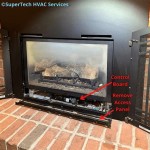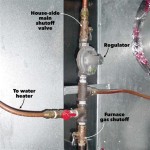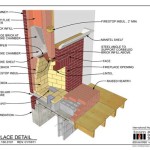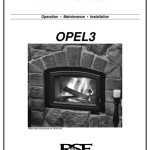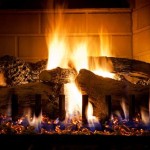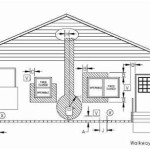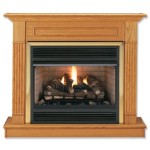```html
Gas Fireplace Insert: A Comprehensive Guide
A gas fireplace insert is a self-contained heating appliance designed to be installed directly into an existing masonry or factory-built wood-burning fireplace. They offer a convenient and efficient alternative to traditional wood-burning fireplaces, providing heat at the flip of a switch and eliminating the need for firewood storage and handling. Gas fireplace inserts burn either natural gas or propane, offering flexibility based on available fuel sources. This article provides a detailed overview of gas fireplace inserts, covering their benefits, types, installation considerations, maintenance requirements, and factors to consider when choosing the right model for a specific need.
Benefits of Gas Fireplace Inserts
Gas fireplace inserts offer a multitude of advantages over traditional wood-burning fireplaces. These benefits contribute to increased convenience, efficiency, and environmental friendliness.
Increased Heating Efficiency: Wood-burning fireplaces are notoriously inefficient, with a significant portion of the heat escaping up the chimney. Gas fireplace inserts, on the other hand, are designed for optimal heat output and minimal heat loss. They typically boast efficiency ratings ranging from 70% to over 80%, meaning that a greater percentage of the fuel burned is converted into usable heat for the home. This results in lower heating bills and a more comfortable living space.
Convenience and Ease of Use: One of the most appealing aspects of gas fireplace inserts is their convenience. They eliminate the need to purchase, store, and handle firewood. With a simple switch, remote control, or thermostat, the fireplace can be ignited and extinguished instantly. This eliminates the mess, effort, and time associated with building and maintaining a wood-burning fire.
Cleaner Burning and Reduced Emissions: Gas fireplace inserts burn significantly cleaner than wood-burning fireplaces, producing fewer emissions and contributing to better air quality. They release less particulate matter, carbon monoxide, and other pollutants into the atmosphere. Many modern gas fireplace inserts are EPA-certified, ensuring they meet stringent emission standards.
Enhanced Safety Features: Gas fireplace inserts incorporate numerous safety features, such as automatic shut-off valves, oxygen depletion sensors (ODS), and sealed combustion systems. These features help prevent gas leaks, carbon monoxide poisoning, and other potential hazards, providing a safer heating solution for the home.
Consistent Heat Output: Unlike wood-burning fireplaces, which require constant tending to maintain a consistent flame, gas fireplace inserts provide a steady and predictable heat output. This allows for precise temperature control and a more comfortable and consistent heating experience. Many models also feature thermostats that automatically adjust the flame height to maintain the desired room temperature.
Types of Gas Fireplace Inserts
Gas fireplace inserts are available in various types, each with its own characteristics and suitability for different applications. Understanding the different types can assist in selecting the most appropriate insert for a specific fireplace and heating needs.
Natural Vent Gas Fireplace Inserts: Natural vent inserts rely on the existing chimney to exhaust combustion gases. They are typically less expensive than direct vent models but require a properly functioning chimney. The chimney must be in good condition and properly sized to ensure adequate draft and prevent backdrafting of exhaust gases into the home. A professional chimney inspection is typically recommended before installing a natural vent gas fireplace insert.
Direct Vent Gas Fireplace Inserts: Direct vent inserts are generally considered the safer and more efficient option. They feature a sealed combustion system that draws combustion air from outside the home and vents exhaust gases directly outdoors through a dedicated vent pipe. This eliminates the need to rely on the existing chimney and prevents the possibility of backdrafting. Direct vent inserts can be installed in locations where a traditional chimney is not available.
Vent-Free Gas Fireplace Inserts: Vent-free inserts, also known as ventless inserts, do not require any venting to the outside. They burn gas very cleanly and release only minimal amounts of combustion byproducts into the room. However, due to concerns about indoor air quality and potential health risks, vent-free inserts are subject to stricter regulations and may not be permitted in all jurisdictions. They also require a properly sized room with adequate ventilation to ensure safe operation. Carbon monoxide detectors are strongly recommended when using vent-free appliances.
B-Vent Gas Fireplace Inserts: B-Vent fireplace inserts utilize the existing chimney for venting but require a specialized "B-Vent" pipe inside the chimney. This pipe is double-walled and designed to handle the specific exhaust gases produced by gas-burning appliances. B-Vent inserts offer a balance between cost and safety, providing a more efficient venting system than natural vent models while still utilizing the existing chimney.
Installation and Maintenance Considerations
Proper installation and regular maintenance are crucial for ensuring the safe and efficient operation of a gas fireplace insert. Adhering to manufacturer guidelines and local building codes is essential.
Professional Installation: It is highly recommended to have a qualified professional install a gas fireplace insert. Improper installation can lead to gas leaks, carbon monoxide poisoning, and other serious hazards. A professional installer will ensure that the insert is properly connected to the gas line, vented correctly, and meets all applicable safety standards. They will also be able to assess the condition of the existing chimney (if applicable) and make any necessary repairs or modifications.
Gas Line Connection: The gas line connection must be performed by a licensed plumber or gas fitter. They will ensure that the gas line is properly sized and connected to the insert, and that all connections are leak-tested. It is important to use the correct type of gas piping and fittings to prevent leaks and ensure safe operation.
Venting Requirements: The venting requirements for a gas fireplace insert vary depending on the type of insert. Natural vent inserts require a properly functioning chimney. Direct vent inserts require a dedicated vent pipe that extends directly outdoors. It is crucial to follow the manufacturer's instructions and local building codes regarding venting requirements to ensure proper combustion and prevent backdrafting.
Regular Maintenance: Regular maintenance is essential for keeping a gas fireplace insert in optimal condition. This includes cleaning the burner assembly, inspecting the venting system, and checking for gas leaks. The frequency of maintenance will depend on the usage of the fireplace and the manufacturer's recommendations. A professional inspection and cleaning should be performed at least once a year.
Safety Checks: It is important to regularly check the operation of the gas fireplace insert to identify any potential problems. This includes checking the flame pattern, listening for unusual noises, and ensuring that the pilot light (if applicable) is burning properly. Carbon monoxide detectors should be installed and tested regularly to provide early warning of any potential carbon monoxide leaks.
Cleaning the Glass: The glass door of a gas fireplace insert can become dirty over time due to soot and other deposits. It is important to clean the glass regularly to maintain a clear view of the flames. Use a specialized glass cleaner designed for gas fireplaces and follow the manufacturer's instructions.
Factors to Consider When Choosing a Gas Fireplace Insert
Selecting the right gas fireplace insert involves carefully considering various factors to ensure it meets specific needs and fits the existing fireplace. Taking the time to research and evaluate options can lead to a satisfying and efficient heating solution.
Heating Capacity: The heating capacity of a gas fireplace insert is measured in British Thermal Units (BTUs). The appropriate BTU rating will depend on the size of the room to be heated and the climate. A larger room or a colder climate will require a higher BTU rating. Consult with a professional to determine the appropriate BTU rating for specific heating needs.
Fireplace Size and Dimensions: The gas fireplace insert must be sized correctly to fit the existing fireplace opening. Measure the height, width, and depth of the fireplace opening and compare these measurements to the dimensions of the insert. It is important to ensure that the insert fits snugly into the fireplace opening and that there is adequate clearance around the insert for proper ventilation.
Fuel Type: Gas fireplace inserts are available in both natural gas and propane models. Choose the fuel type that is most readily available and cost-effective. Natural gas is typically less expensive than propane, but it may not be available in all areas. Consider the availability and cost of both fuel types when making a decision.
Style and Design: Gas fireplace inserts are available in a wide range of styles and designs to complement different home décor. Choose a style that fits the aesthetic of the room and personal preferences. Options include traditional styles with realistic log sets, contemporary styles with glass media, and linear styles with sleek designs.
Features and Options: Gas fireplace inserts offer various features and options, such as remote controls, thermostats, blowers, and decorative fronts. Consider which features are most important and choose an insert that offers the desired functionality. Remote controls allow for convenient operation from anywhere in the room. Thermostats maintain a consistent room temperature. Blowers circulate warm air throughout the room. Decorative fronts enhance the appearance of the fireplace.
Efficiency Rating: The efficiency rating of a gas fireplace insert indicates how much of the fuel burned is converted into usable heat. Look for inserts with high efficiency ratings to minimize energy consumption and lower heating bills. Energy Star-certified models are particularly efficient.
Warranty: A comprehensive warranty provides peace of mind and protects against potential defects in materials and workmanship. Look for inserts with long warranties on key components, such as the burner assembly and gas valve.
Budget: Gas fireplace inserts range in price from a few hundred dollars to several thousand dollars. Determine a budget and choose an insert that offers the best value for specific needs. Keep in mind that installation costs can also add to the overall expense.
By carefully considering these factors, homeowners can select a gas fireplace insert that provides efficient heating, enhances the ambiance of the home, and offers years of reliable performance.
```How To Install Gas Fireplace Insert Heat Glo

Napoleon Gas Fireplace Inserts Patio Palace

Gas Fireplace Inserts Napoleon Fireplaces

Belmont Small Gas Insert

Enviro E Series Gas Or Propane Insert Fireplace Fireplaces By Cameron

Majestic 25 Inch Ruby Direct Vent Gas Fireplace Insert

Fireplace Insert Installation Wood Inserts Gas Pellet And Electric

Contemporary Gas Fireplace Inserts Provide Several Benefits Kozy Heat Fireplaces

Enviro E25 Gas Fireplace Insert Safe Home

30 Ruby Contemporary Intellifire Touch Direct Vent Fireplace Insert Blower And Remote Electronic Ignition Majestic
Related Posts

